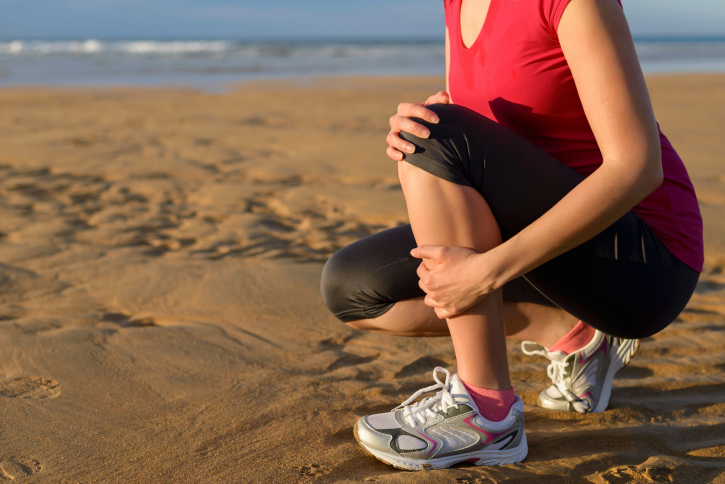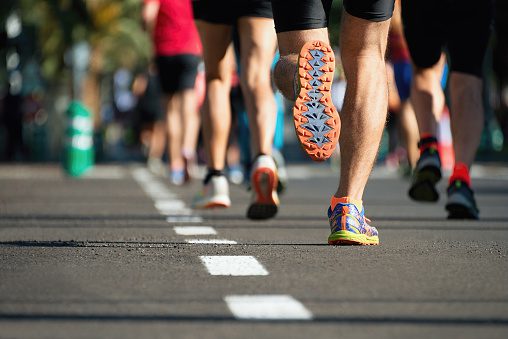Shin splints: why we get them and how to avoid them
We spoke with runner, triathlete, coach and physiotherapist Lindsay Scott to learn what causes shin splints and how we can prevent them

One of the most common injuries that plague new runners is shin splints. Although shin splints are usually a minor injury, the pain they cause can be debilitating and can derail your efforts to get into a regular running routine. We spoke with Lindsay Scott, a runner, triathlete, coach and physiotherapist at The Runner’s Academy in Toronto to understand why shin splints happen and what you can do about them.
https://www.instagram.com/p/BtOlGUcBRUc/?utm_source=ig_web_copy_link
RELATED: Tips to heal your running injury as quickly as possible
What causes shin splints?
Scott explains that a true shin splint is believed to be the result of cumulative damage in the shin bone, but we often use the term to describe any pain in the shin area that occurs when a muscle, tendon, or bone has been overloaded. There are a few common culprits to explain how this might happen, including your running form, as well as poor co-ordination and control through your foot and ankle or hip and trunk.
Your running form plays a big role in how you load your body when you run. Certain stride patterns like crossing your feet over the midline as you run, or having a high stride length, can increase your risk for shin splints. Poor co-ordination through your foot and ankle as your foot hits the ground can also place more load on your shin than it can handle. Likewise, if you can’t properly control your hips or trunk (aka torso) while you run, your shin bone will often rotate inward to compensate, putting excess stress on the muscles in that region.
RELATED: 5 must-do exercises for improved running form
How can new runners avoid shin splints?
According to Scott, the most important way for beginner runners to prevent shin splints is to start gradually. She explains that when you run, you place a load of anywhere from 2.5 to six times your body weight on your muscles, bones, ligaments and joints, and you need to give your body time to adapt. She suggests starting out by only running every second day, building your mileage and intensity slowly and mixing easy runs into your harder efforts to avoid the “too much too soon” trap.
Scott also reminds runners that the demand our on bodies is determined by more than just the physical demands of running. Things like poor sleep and high stress levels will affect your body’s ability to tolerate and adapt to loads.

What can you do if you get shin splints?
Of course, simply taking time off running will alleviate your symptoms, but Scott says that if you want to be able to run comfortably in the long term, you have to manage the factors that contributed to your shin splints in the first place. To do this, she recommends speaking with a physiotherapist or other health professional – bonus points if they have experience working with runners. On that note, Scott has a few tools that can help you reduce your symptoms and get you back out running.
Whether you have to reduce or completely eliminate running for a period of time, she encourages runners to stay active in any way they can without causing pain. Bone, she explains, responds particularly well to some load, so low-load activities like walking can really help, so long as it doesn’t aggravate your symptoms.
https://www.instagram.com/p/CHsbANKH0ph/?utm_source=ig_web_copy_link
Scott also recommends you build strength, co-ordination, control and mobility in your deep foot muscles, ankles, calves, hips and trunk. This will ensure that you’re less likely to move in a way that will overload tissue and your body will be better able to handle greater loads. Better mobility is important, particularly through your foot and ankle, because if you don’t move well through a joint, loads will increase elsewhere. Having your gait assessed is a great way to understand how your body is moving and what needs to be changed.
Finally, Scott suggests you slowly re-introduce running once you’re ready, building slowly to allow for plenty of recovery time so your body can adapt and adjust accordingly.
RELATED: Should you modify your running gait to prevent injury?


